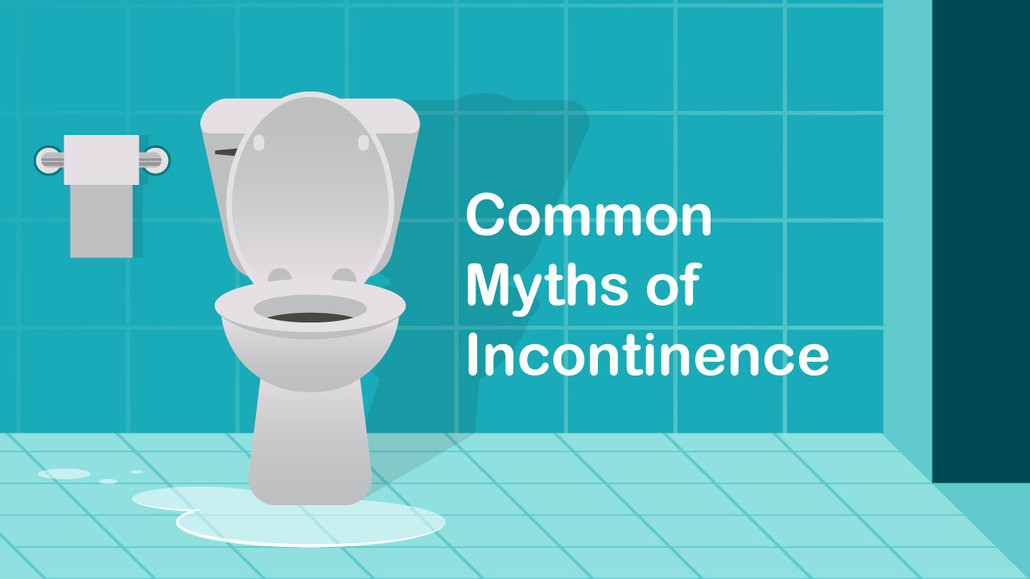
Common Myths of Incontinence
Posted by Andrew on 2021 Jul 28th
When it comes to incontinence there are many myths surrounding what causes it, who can suffer from it, and how to best deal with it. With this blog we hope to clear up ten points that can cause confusion and uncertainty, and give you the information you need to tackle incontinence with confidence!
Myth #1 - Incontinence only affects the elderly
It is a common misconception that incontinence is only faced by those who are elderly. Pregnancy, accidents, stress, or medical conditions can all be factors which lead to one experiencing either partial or full incontinence. Even those who are in their 40s or 50s may notice symptoms of incontinence begin to develop. It is important to not carry the stigma that incontinence is something only experience by a certain group of people.
Myth #2 - Not many people suffer from incontinence
A 2018 report showed that 37 Million people in North America suffer some from of incontinence. That's nearly 10% of the total population. When looking at worldwide numbers, that increased to 423 million people, or almost 9% of the world's total population. View the report here.
Myth #3 - It's normal to leak a little sometimes
Any form of leakage may point to a form of incontinence. If beginning to experience leakage, consult with a medical professional regarding how to best manage it.
Myth #4 - Bladder related issues are inevitable with aging or child birth
While giving birth can be connected to loss of continence, it is by no means a guaranteed effect. Similarly with aging, it is very possible to be 90 or older and not experience incontinence. It is important to remember that those of any age or physical condition can experience incontinence.
Myth #5 - Incontinence is only triggered by physical activity
One belief is that symptoms of incontinence are only triggered by things like movement or strenuous physical activity. The reality is that there are also a variety of mental triggers which may bring about signs of incontinence as well such as hearing certain sounds or experience certain thoughts. This can include hearing the flow of running water or being out in colder temperatures.
Myth #6 - Drinking less lightens symptoms of incontinence
It can be a natural assumption that if one experiences incontinence the best thing you could do to prevent leaks or accidents would be to drink as little as possible. Drinking more in small doses can actually help build up bladder control, so it's important to not fear drinking liquids.
Myth #7 - Men rarely experience incontinence
A growing number of men are beginning to experience incontinence in recent years. Prostate related surgeries as well as work related injuries are both factors which have contributed to the growing number. Over 120 million men around the world experience incontinence, compared to the over 300 million women who do.
Myth #8 - Incontinence isn't serious
Incontinence can be connected to other health conditions, such as prostate problems or high stress levels. If you begin to experience incontinence it is something that should be brought to the attention of your doctor right away. The sooner the reason for incontinence is diagnosed, the better.
Myth #9 - Kegel exercises are only for women
Great for strengthening bladder muscles, kegel exercises are certainly not something that can only be done by a single sex! Men are increasingly using kegel exercises to strengthen their bladder muscles as well.
Myth #10 - Natural therapies don't work
Like with kegel exercises, there are many natural ways to help strengthen your bladder muscles and reduce symptoms of incontinence. Studies have also shown that increasing the amount of magnesium and vitamin D in your diet can not only help alleviate the symptoms of incontinence but also prevent from occurring altogether.
BONUS: Myth #11 - Nothing can be done about incontinence
The most important thing to remember is that should you begin to experience symptoms of incontinence, don't despair! There are a variety of ways to alleviate symptoms or in some cases regain complete continence all together. One major thing that one can do is change their lifestyle to be healthier and more stress-free. Diet also plays a big role, with caffeinated and alcoholic drinks being large offenders for worsening incontinence. Aside from the natural and habitual related suggestions listed above, you may wish to talk with a medical professional to see what medications or surgeries may be available to you as well.
BONUS: Myth #12 - Sanitary napkins can be used to manage incontinence
Sanitary napkins are made with a different type of polymer compared to products intended for incontinence. As a result they do not adsorb and provide the proper protection one who experiences bladder leakage may need. Switching to a product that is intended for managing incontinence can give one the confidence to go about their day without the stress of worrying about leaking, and lead to improved mental health.
Incontinence is something that can be tough to discuss with others, but as time goes on and the number of people who encounter it grows, it is gradually becoming less and less of a taboo subject. The most important thing is to not ignore it, and to address it as best you can. Never be afraid to approach a doctor and get medical advice. We hope this list has helped clear up some of the myths you may have heard surrounding incontinence, and that going forward you have the knowledge and confidence you need to address it properly.




